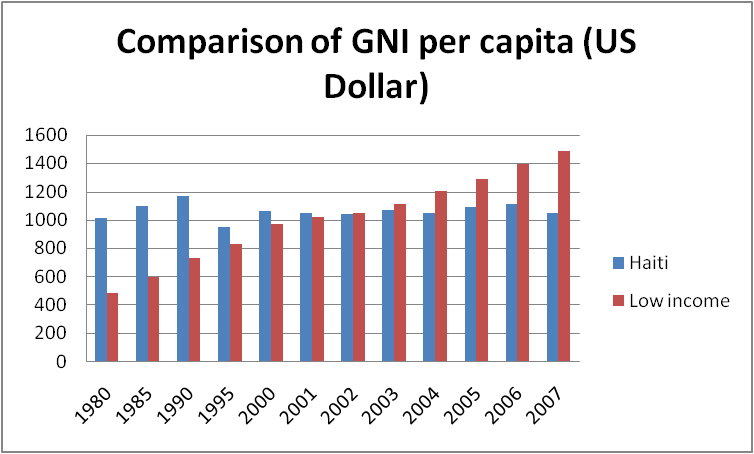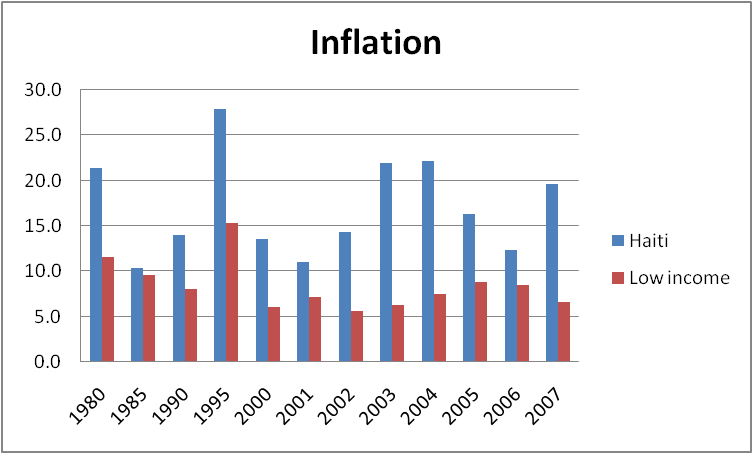Introduction
Haiti is on the western part of the island of Hispaniola to the east of Dominican Republic (see Appendix A). Haiti was a French colony and they used it to harass English and Spanish ships. However, as piracy was subsided with Spain ceding western third of the island to the French and a gradual decline in piracy, it turned out to become one of the richest colonies of 18th century. In 1804, Napoleon Bonaparte renamed the island as Haiti.
Haiti is the oldest republic in the western hemisphere after United States of America. The country became independent on 1826 and only in 1820 was the country’s north and south parts united. Haiti has undergone a series of political upheaval, which has shaped the economic condition in the country. The political condition in Haiti is in the shambles with a long history of anarchy, insurrection, dictatorship and political infighting (The Economist) the Haitian economy has remained one of the poorest economies of the world (US Department of State).
This paper is a country report on the macroeconomic environment of Haiti. The paper will deal with the political, economic, social and cultural environment of Haiti, which have affected the macroeconomic situation in Haiti. Then the paper will discuss the macroeconomic situation of the country and the present economic state of the country. This part of the paper will deal with a quantitative analysis of the economic data on Haiti and the present condition of the economy. Then the paper will compare and contrast the economic condition of Haiti with other countries with similar per capita income. This will provide a clear understanding of the nature of development in Haiti. The fourth part will provide an economic forecast for the country.
Haiti: Background
This section of the report will provide a social, cultural, political and economic background of Haiti. This background study will provide an understanding of the situation of the country, which cannot be found through data and statistics.
Geography
The country is located 1000 kilometers southeast of Florida and 95 kilometers southeast of Cuba. It occupies the western part of the Caribbean island of Hispaniola (Appendix A). The island is especially dominated by hills and mountains, and the interiors of the country are semi-arid. The country’s tropical forest has been devastated due to two centuries of harvesting and clearing for agricultural land. Irrigation and small-scale farming are pre-dominant along the Artibonite River Valley.
Political Background
Haiti underwent a 29 years dictatorship of the Duvalier family, which began on 7 February 1986 and remained until 1991 (US Department of State). On 1990, Jean-Bertrand Aristide elected the President of the country. However, he remained in office only for a few months as a violent coupe overthrew him as president supported by the country’s economic elites. From October 1991 until September 1994, the country experienced a de facto military regime when thousands of people were killed. On 1994 with UN intervention, the military regime was overthrown with the help of multinational force (MNF). With the return of the exiled political leaders in October 1994, a parliamentary election was held on June 1995 and the country elected Aristide as the president. Then in 1996, Rene Preval was sworn in for 5 years as president.
The political scenario in Haiti underwent a series of political upheaval. In 1996, President Preval dismissed legislators whose term had expired and local elected officials were converted into state employees. Political manipulations in controlling the democratic machinery of the country were observed in elections of 2000. Post-2000 elections, Haiti’s bilateral donors re-channeled their assistance declared that they will not support the government. Jean-Bertrand Aristide emerged as victor of the elections, which were immensely controversial and showed a voter’s turnout of 5 percent (US Department of State).
After these controversial elections, the political situation in Haiti was completely disrupted and violence ensued in the state. Security in the country deteriorated. Government support anarchism dealt away with every kind of opposition demonstration and protest. The situation worsened through 2004, when Aristide resigned as the President of Haiti and went into exile in Africa. From 2004 to 2007, an interim government headed by Supreme Court justice Boniface Alexandre as president and Gerard Latortue as prime minister was formed with the mandate to organize elections. First round of elections took place in 2006 with the Id of the UN and OAS and Rene Preval was elected the President in 2006.
Since 1994 until 2005, Haiti saw the presence of MNF peacekeeping forces, which helped restore constitutional government to power. From 2004 onwards, U.S.-led Multilateral Interim Force has been placed in the country on request of the UN and the interim government. These forces are present to ensure stability in the country until UN peacekeeping forces arrived to Haiti. The UN forces arrived in April 2004. Since 2006, President Preval has requested for continued UN intervention in peacekeeping as well as for assistance in social, political and economic reform (The Economist).
Social Background
Haiti consists of 95 percent population of African descent and 5 percent of mixed race. The country experiences conflicts based on race, culture and ethnicity, which becomes the basis for the country’s political turmoil. The black landholders were oppressed class and the mixed race urban-based elites dominated the country. Haiti has experience violent protests against economic, political and social institutions, which arose from differences in color, and economic class.
Haiti being one of the poorest countries of the world, suffers on the world’s worst inequality in income: about 1 percent of the population receives 40 percent of the national income. Most of the population lives in extreme poverty and 66 percent of the population is unemployed, and per capita income in 2007 was $694. Poverty has led to massive illegal emigration to the US, the Bahamas, and other Caribbean countries.
Free and compulsory education is present for all children aged between 7 to 13 years. However, enrolment in schools is only 67 percent. The literacy rate of Haiti is just over 50 percent.
According to World health Organization (WHO) ranking, Haiti’s health system ranks among the worst in the world. The population growth in the country is rapid (1.6 percent in 2007) which makes the situation worse. The infant mortality rate in the country, which is 64 deaths per 1,000 live births in 2007, is one of the highest in the world. In 2006, only 50 percent of Haitians in rural areas have access to safe water and in urban areas, only 71 percent have access to safe water and 20 percent to improved sanitation services (Political Risk Services). The lack of proper sanitation and drinking water has increased incidence of malaria and measles.
Therefore, the social condition in Haiti is in disarray due to political instability. The health and social conditions of the people have been grossly neglected and the increased violence has led to mass exodus and migration to other countries.
Economic Background
The financial situation of Haiti has been in a dilapidated state since the 1991 coup. The de facto regime resulted in a sharp economic decline in 1991-94. The country has been receiving mandatory sanctions from OAS and US since 1991. The UN embargo stopped all aids to Haiti except for food and medicine. During this period, employment fell by 17000, due to the heavy dependence of the country on US economy. With the end of the embargo the assembly sector regained employment of 18500, and the US provided new trade preference especially in textile/apparel products. However, investment in the country has been stagnated sue to the increasing concern regarding security and volatile political condition, lack of access to credit, and legal and physical infrastructure limitations in the country.
The economy has undergone liberalization under President Preval, which include trade/tariff liberalization, control of government expenditure, and increase of taxes. Other structural changes that were undertaken during the period were cutting back the services of civil servants, financial sector reform and modernization of state run industries. Further conditions for growth of private sector and entry of international players in the market were encouraged.
Proper labor laws and codes were established and a minimum wage was set for all Haitian workers. Thus, the Haitian economic condition has been in shambles due to anarchy and violence prevalent in the country. The country’s economic mechanism had taken a backseat to bring back peace in the country. This has led to less concentration of the government on economic development than on social development.
Quantitative Information
Economic Performance
Haiti is one of the poorest countries of the world. The country’s GDP growth rate has been very low in 2000 until 2007. It was 0.4 percent in 200, which had marginally increased to 1.8 percent in 2005 then to 3.2 percent in 2007 (World Bank). Figure 2 (in Appendix B) shows that the Gross Domestic Product (GDP) per capita at constant prices shows that the GDP per capita has been declining in Haiti since 1980. The GDP per capita has declined constantly with spurts of increase in GDP on 1990. GDP per capita at constant prices measures the share of GDP to each member of the population when GDP is measured in US dollars at constant prices (prices pegged to a certain year). This indicates that when prices are kept constant, the GDP of the country per capita declines.
Further the GDP per capita of PPP in US Dollars too have shown similar trend in Haiti as was observed in case of GDP per capita in constant prices in US dollars. The former has shown (see figure 3, Appendix B) an increase in GDP per capita since 1975 until 1980. From 1981, the graph shows a declining trend until 2005. This shows that the purchasing power of the population was declining every year, indicating that less income and goods was available to average Haitians in terms of real goods.
It had increased initially after 1970 until 1980 when the GDP per capita started to decline. The reason for the decline is attributable to the economic stagnation in the country since 1980s. This was the result of earlier inappropriate economic policies, political instability and violence. The 1980s also saw a mass exodus of skilled labor from the country due to the insecure conditions in the country.
The unemployment rate in the country has been increasing with a sharp increase from around 12 percent in 1982 to 24 percent in 1988. The reason for this may be found in the embargo put on the country by the UN, which led to a sharp increase in unemployment. In assembly sector alone, 17000 labors lost work (US Department of State). However, once the embargo was lifted, 18500 workers were gained employment, which declined the unemployment rate in 1990s. Further, the textile sector in the country also got prominence and international funding which increased employment.
Demographics
The demographic situation of the country has affected growth negatively. The social and health situation in the country is dwindling, with the population increasing constantly. As figure 5 (see Appendix B) shows, the population of the country was 5.42 million in 1980, increased to 6.47 million in 1990 to 7.55 million in 2000. In 2006, the population was at 8.47 million. The population has been growing at an average rate of 1.7 percent since 1980. Thus, the population of the country has been growing constantly where the GDP per capita had been declining at constant prices. Figure 6 shows that the population growth rate has been increasing since 1970s until 1986 after which the population growth rate sharply declined and since the 1990s through 2004 the population growth rate has been stable.
Figure 7 shows that the crude birth rate of Haiti has been declining. This may be due to the bad health facilities provided to the rural and urban areas of the country according to WHO. Figure 8 shows that the crude death rate of the country has been declining after the 1990s, though high. The decline may be attributed to the food and medical facilities that were provided to the country by international organizations. The fertility rate of the country has been declining (figure 8, Appendix B). With declining fertility rate, the population growth of the country may be reducing, which is again shown through a declining population growth rate since the 1990s.
Figure 10 (see Appendix B) shows the age structure of Haiti. Haiti has a relatively young population with almost 40 percent of the population around the age group of 0 to 14 years. The composition of the population in this age group has been declining since 1990 when the fertility rate too had been showing a decline. The maximum of the population is in the age group of 15 years to 64 years, which is the working age. Thus, the population has maximum population in the workforce.
Capital Accumulation
The gross domestic savings for Haiti has been moving up and down and it became negative in 1992 and 1994. As figure 11 shows, the gross domestic savings of the country has been moving up and down without following any certain pattern became negative for two years. However, in the late 1990s the savings rose up, but soon started falling in 2000 and declined to around 1 percent in 2002.
Further, the urban population had been increasing in the country with the urban population as a percentage of total population reaching close to 40 percent after 2004 (see figure 12, Appendix B). Again, considering the structure of production of the economy in the economy, we see that the share of agricultural production to the GDP had declined 1994 to 2003 (see figure 13, Appendix B). The share of industrial production had increased and then declined considerably from 1994 to 1999 but thereafter declining.
The services share to GDP has been increasing from 1994 to 2004. This trend along with urban migration of the rural population indicates that the economy is moving towards a path of development, but the development is not sustained, as the infrastructural base supported by the industry has remained underdeveloped in the country.
Human Capital Formation Information
The percentage of female labor force in the labor force has been declining constantly. Figure 14 (see Appendix B) shows the declining trend of female labor force. The contribution of female in labor force was more than 44 percent in 1980, which declined to less than 42 percent in 2005.
Figure 15 shows the life expectance at birth in Haiti. Life expectancy measures the number of years on average a Haitian lives. This has increased from around 40 years in 1960 to more than 50 years in 2005 indicating that people was expected to live longer in Haiti. Infant mortality rate (figure 16, Appendix B) has gone down considerably from more than 160 deaths per 1000 live births in 1960 to around 80 deaths per 100 live births in 2004. Thus the infant mortality rate declined by half the rate since 1960.
Figure 17 in appendix B shows that the number of physicians available per 1000 people has increased considerably. According to the last information available, in 1998, there was 1 physician per 4000 people in Haiti.
Income Inequality
Haiti is classified as one of the poorest countries of the world. The Gini coefficient of the country is at 59.2 (UNDP). According to the Human Development Index measured by UNDP, Haiti assumes a rank of 146 out of 177 countries, which easily makes Haiti one of the poorest countries of the world. Figure 18 (see Appendix B) shows that the HDI of Haiti is rising but is in a much lower position than other Latin American countries. The HDI of Haiti falls close to the sub-Saharan African countries, which falls in the lowest rank.
According to the UNDP assessment, 65 percent of the population had been living under poverty line in Haiti since 1994 to 2004 (UNDP). Forty-six percent of the population does not have access to safe water source in the country. Forty-six percent of the population lived under $1 a day from 1990-2005 and 78 percent under $2 a day from 1990 to 2005. Thus, the income inequality of the country is huge with estimates of 1 percent of the population enjoying 40 percent of the national income (US Department of State).
Government Role and Performance
The inflation rate (see figure 19) has been increasing. Inflation had become negative in 1978 and 1997. However, after the 1990, inflation has been constantly increasing/ inflation had reached almost 40 percent in 1994 and 2003. These coincided with the political upheaval in the country. The number of days required to start up business in Haiti is around 200 days (see figure 20).
Geographic Information
Agricultural land as a percentage of total area of Haiti is around 60 percent ever since 1970. This has declined to around 50 percent in recent times. Though the country is geographically well guarded from cyclonic disturbances, in 1963, Hurricane Flora killed 8000 people and in1998, Hurricane Georges killed over 400 while destroying 80% of all the crops in the country. Figure 21 shows a sharp decline in the forest area in Haiti. This is due to a massive cutting of tropical forest area to gain land for agriculture. Therefore, from 1925 when Haiti had 60 percent natural forest, only 2 percent remained in 2005. The agricultural land in Haiti increased initially from 1980 but after 1988 there was a decline in the agricultural land too (figure 22).
International Linkages
Trade a percentage of GDP (figure 23) has been increasing in the country. However, there has been decline in trade in 1990s, which was essentially due to the UN embargo on the country. Figure 24 shows the merchandise export is more than import. This is due to the prevalence of the assembly industry especially from the US. However, the current account balance as a percentage of GDP is negative as exported goods are lower than imports of goods (figure 25).
The total external debt flowing into Haiti has been high as the UN and other organizational funding in the country has been increasing due to the shattered economic condition of the country. Figure 26 shows the rising total external debt of Haiti which has been rising constantly.
Workers’ remittances as a percentage of GDP has been increasing which had increased from less than 5 percent in 1971 to more than 20 percent in 2005.
Comparison with other Countries
Haiti being one of the poorest countries of the world has been performing better than other countries. As Haiti falls among the poorest of the countries in the world, its economic performance can be compared to other low-income countries of the world. The data for other low-income countries is derived from World Bank data. Figure 28 shows that the per capita GNI of Haiti was higher than other low-income countries in 1980s until 2001.
However, after 2001, there has been a decline in the per capita GNI of Haiti than that of other poor countries. This shows that there has been a decline of economic performance of Haiti. Figure 29 shows that the inflation has been higher for Haiti as compared to other countries since 1980 until 2005. Further, there has been a decline in inflation in other low-income countries, while that in Haiti has increased. Thus, Haiti’s economic performance as compared to other low- income countries has been bad.
Country’s Future
Based on the analysis of Haiti’s economic and social statistics, it can be ascertained that the country’s developmental path in future will depend on political stability in the country. Even though the GDP per capita is expected, to increase and inflation too will increase. Thus, despite a stable political situation has emerged with President René Préval’s government, but increasing inflation and poverty are making the situation in the country tense. Thus, inflation threatens the economic stability of Haiti. Thus, the economic condition at Haiti is expected to worsen if inflation is not checked.
Reference
CIA. “Haiti.” 2009. The World Factbook. Web.
IMF. World Economic Outlook Database,. 2009.
Political Risk Services. Haiti. Country Report. New York: The PRS Group, Inc., 2008.
The Economist. “An uphill struggle.” 2006. The Economist. Web.
UNDP. “2007/2008 Human Development Report.” 2008. UNDP. Web.
US Department of State. Background Note: Haiti. Country Report. Washington DC: Bureau of Western Hemisphere Affairs, 2008.
World Bank. World Development Indicators database,. April 2009.
Appendix A
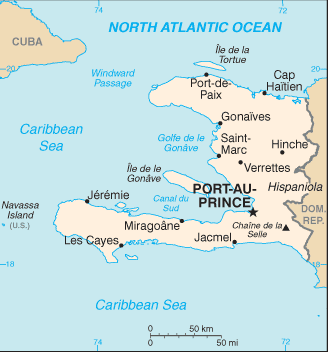
Appendix B
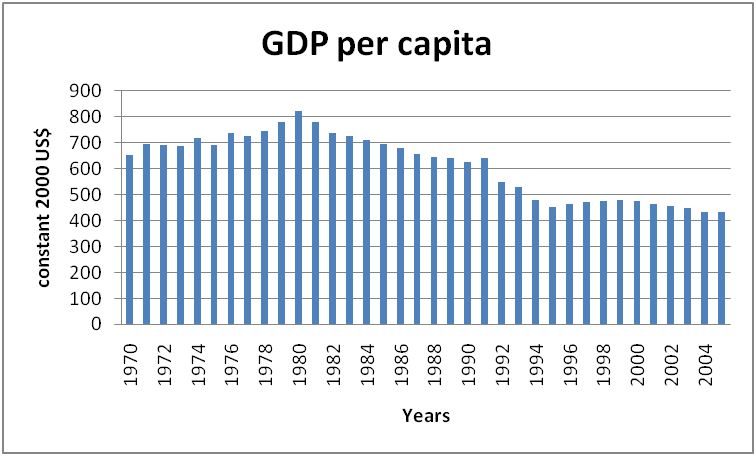
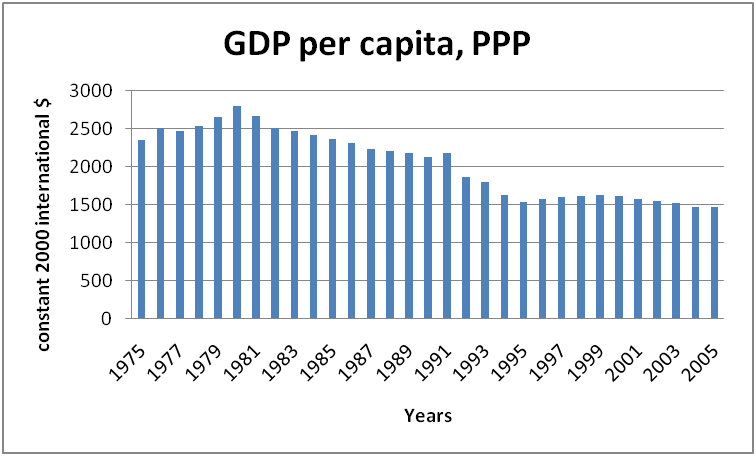
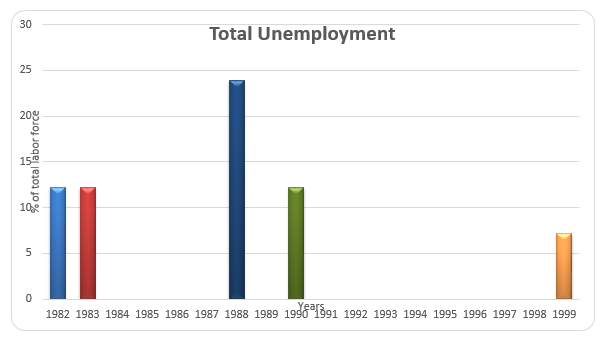
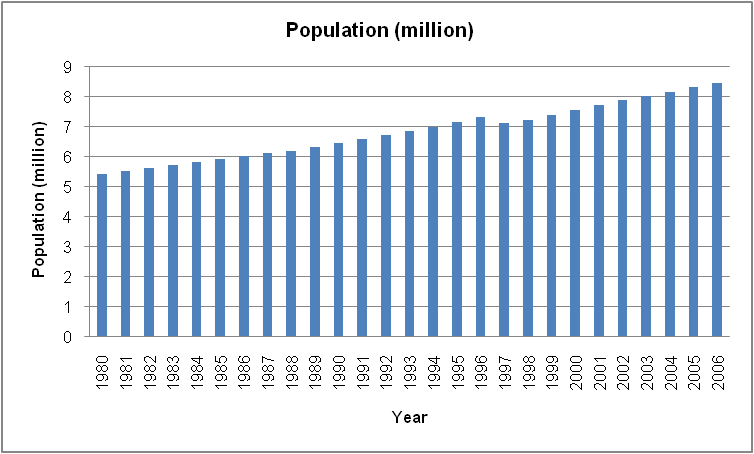
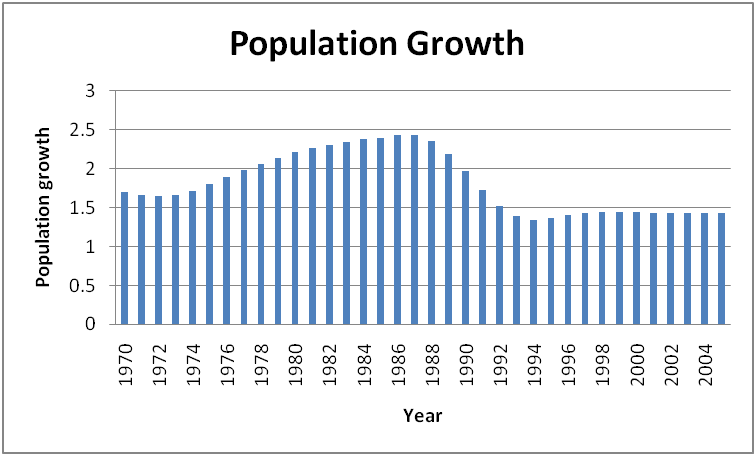
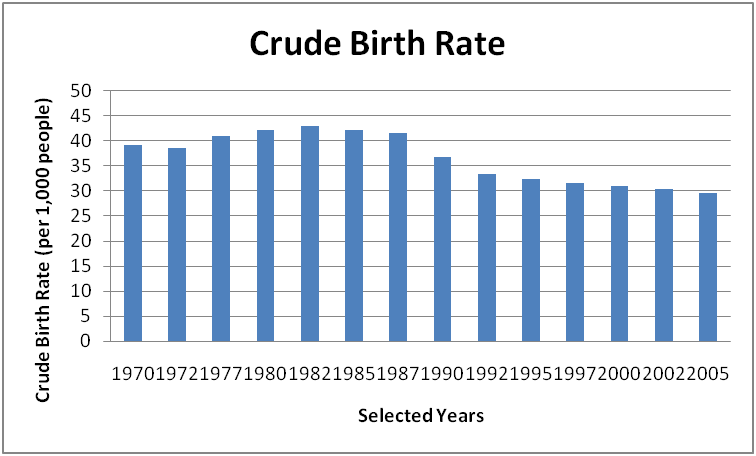
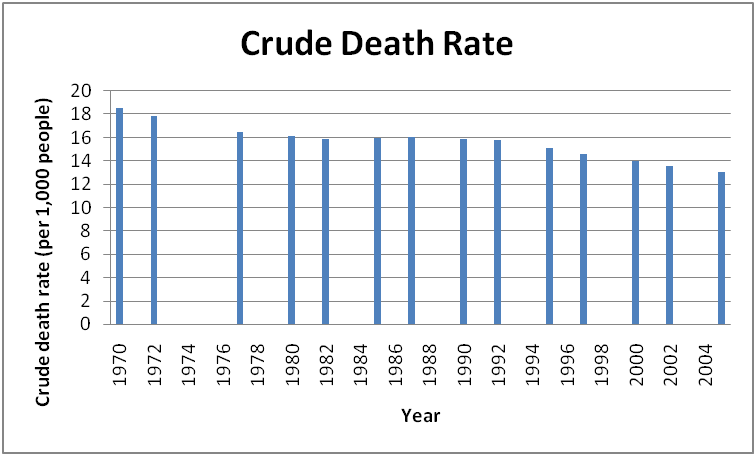
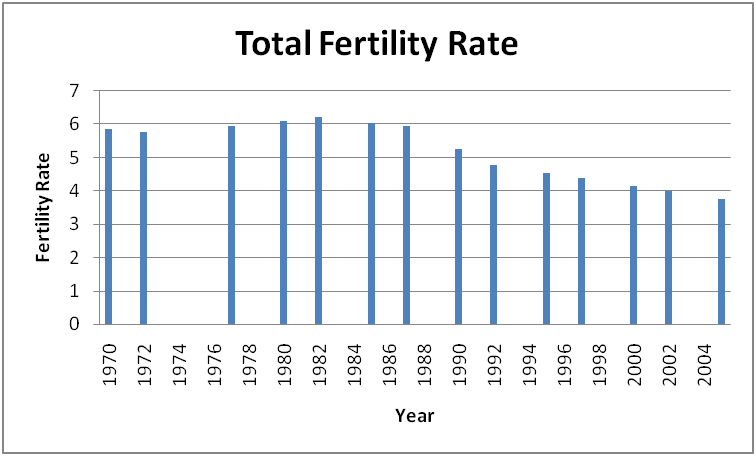
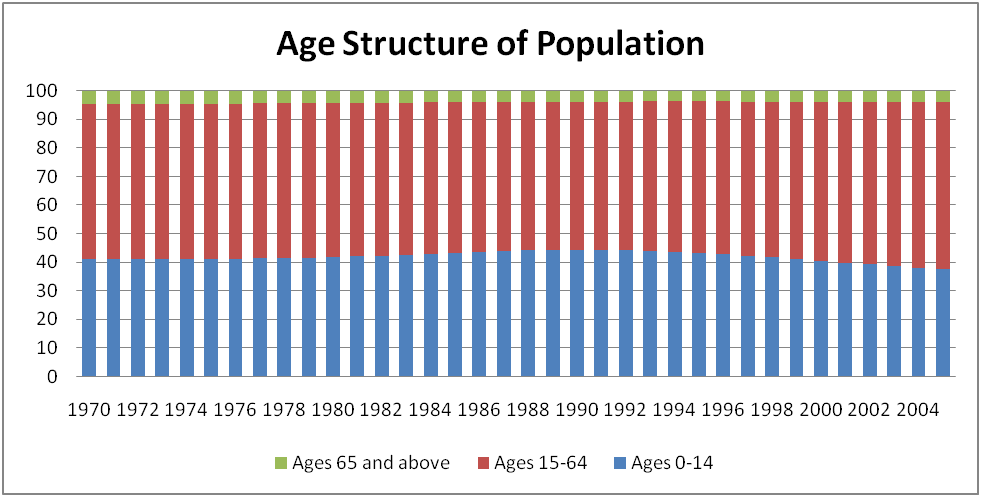
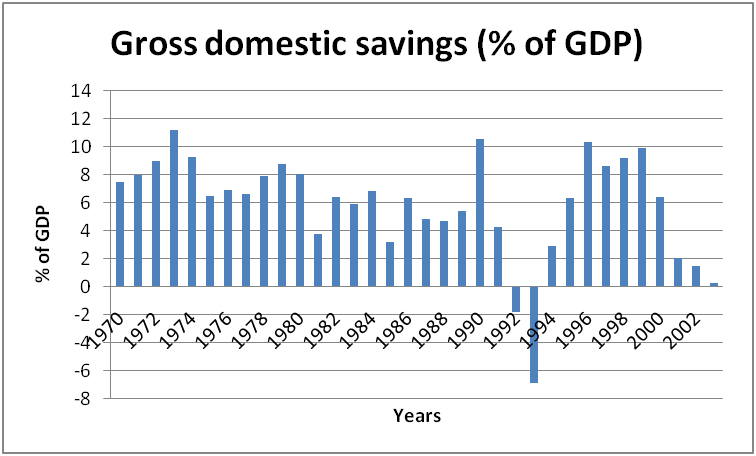
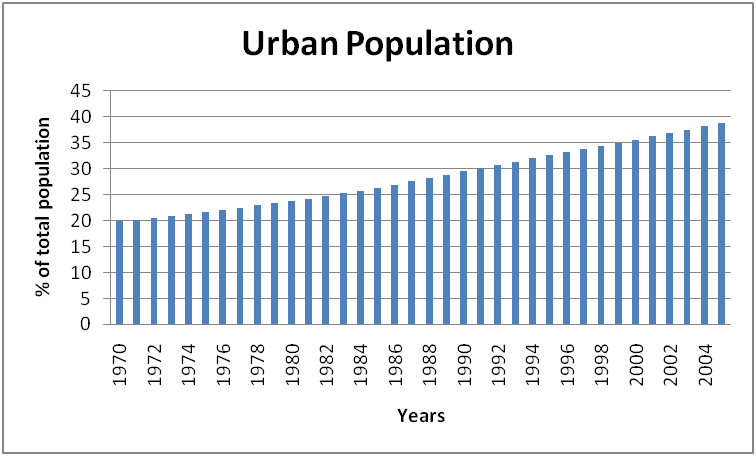
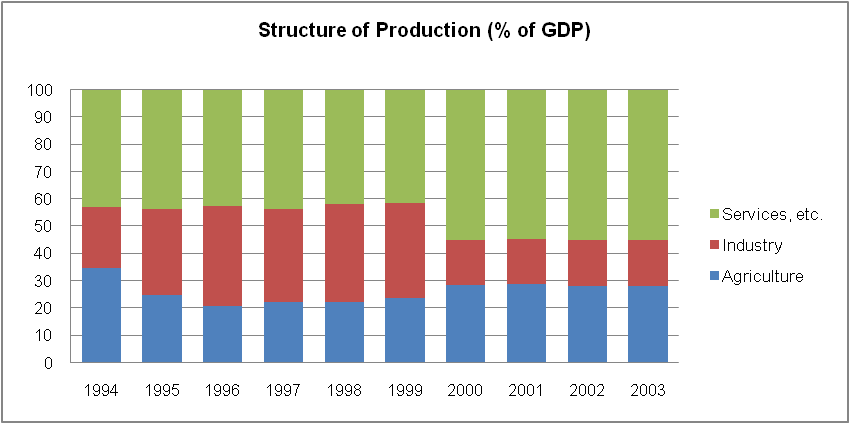
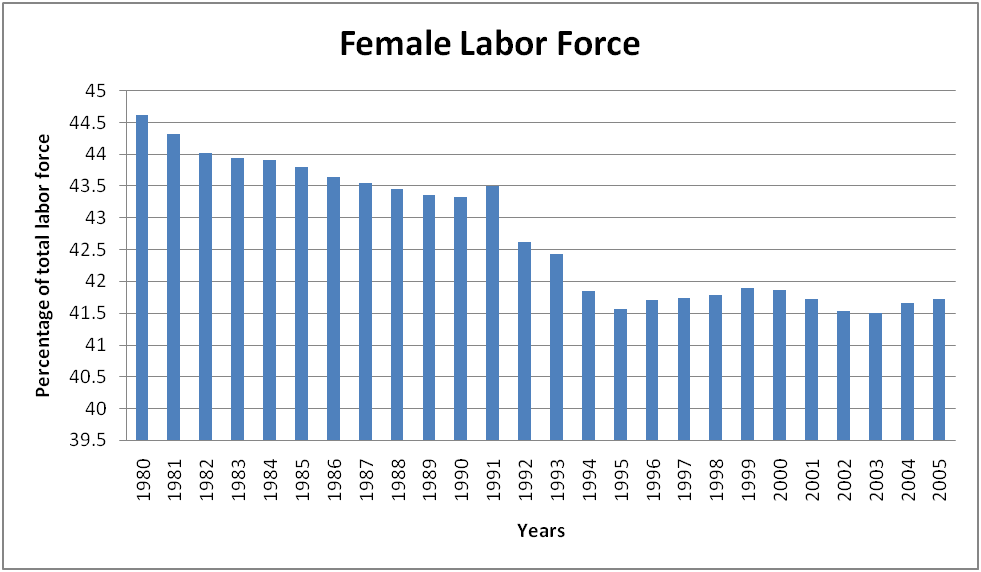
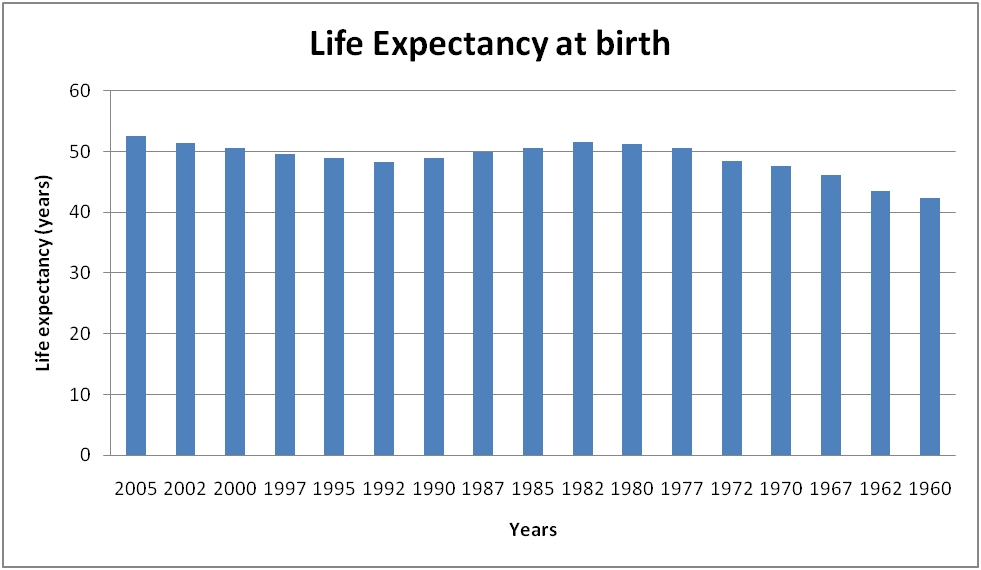
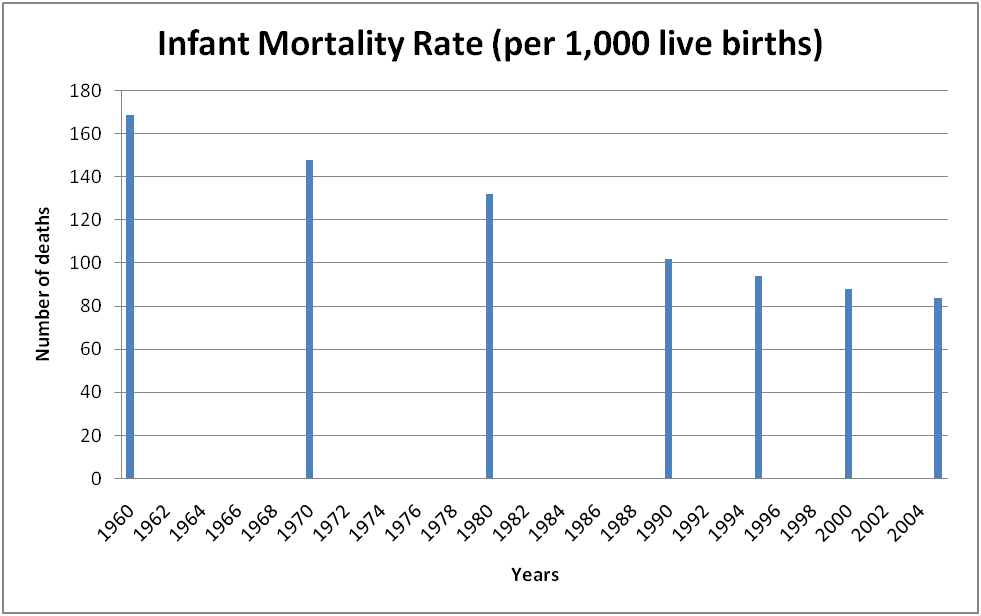
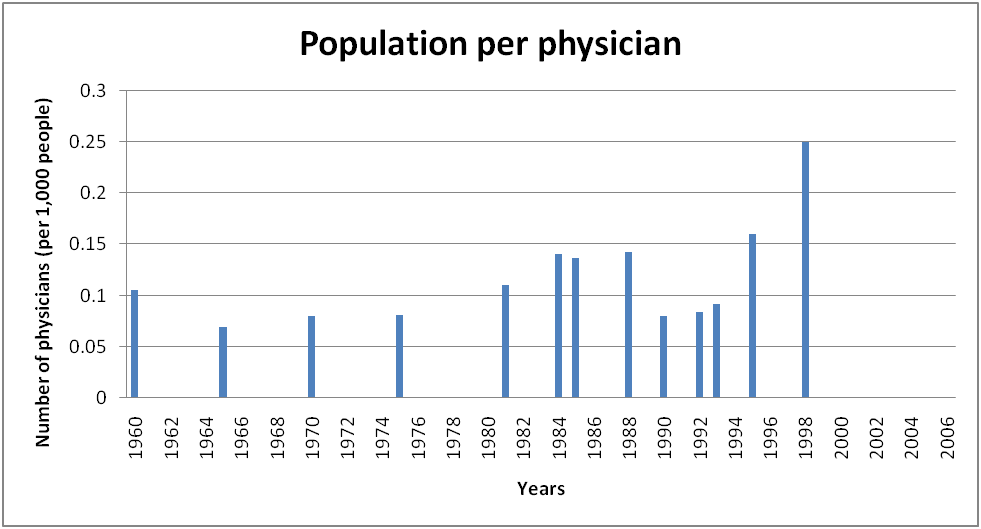
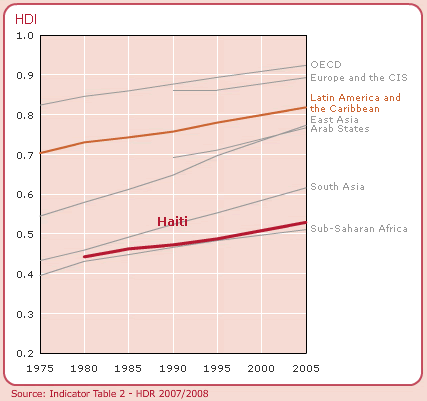
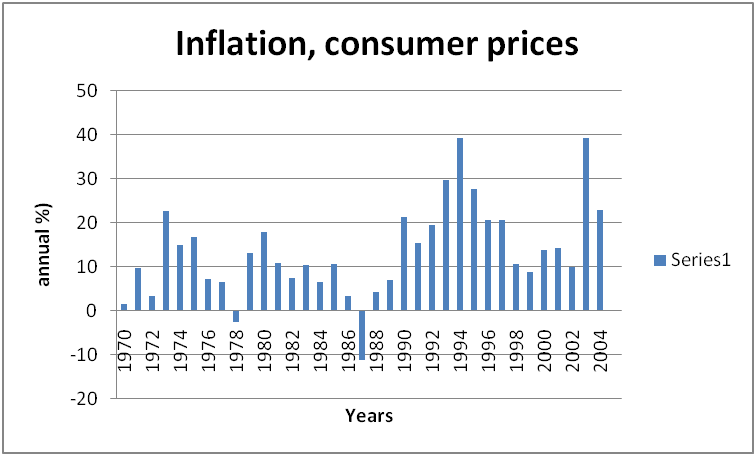
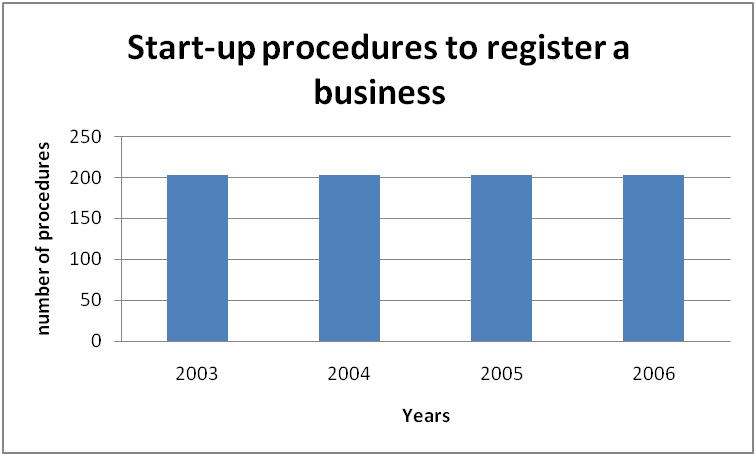
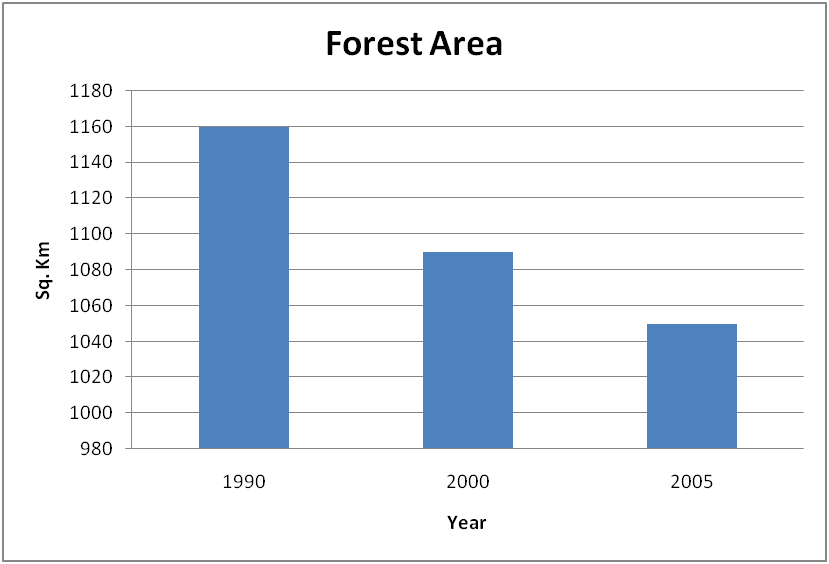
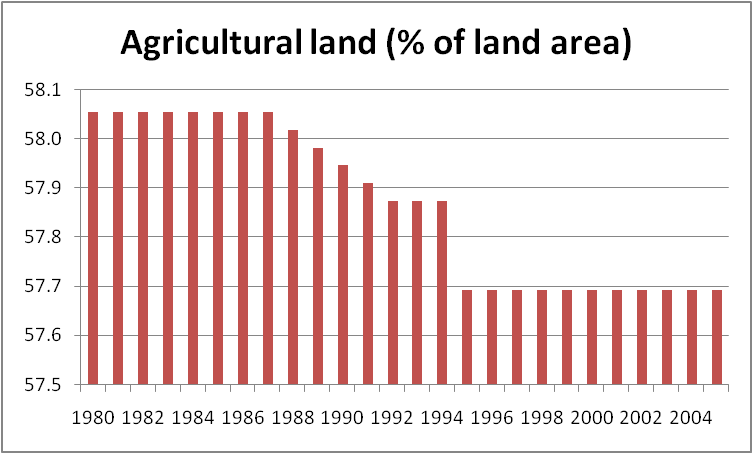
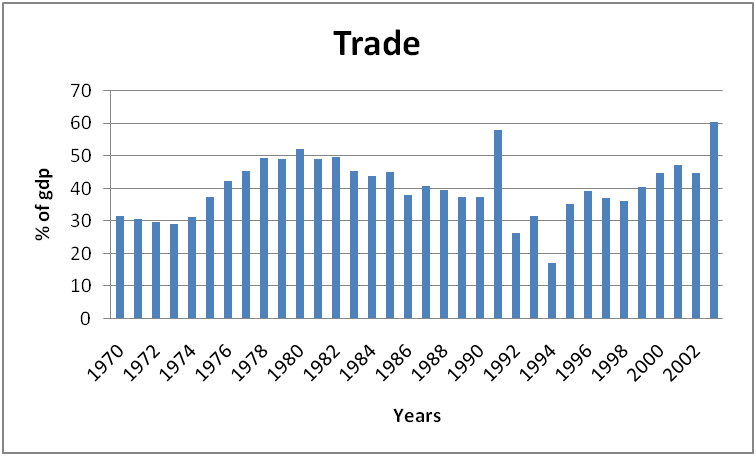
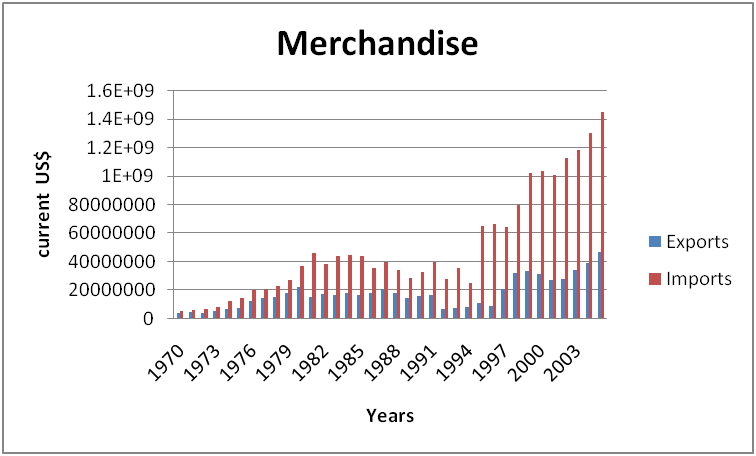
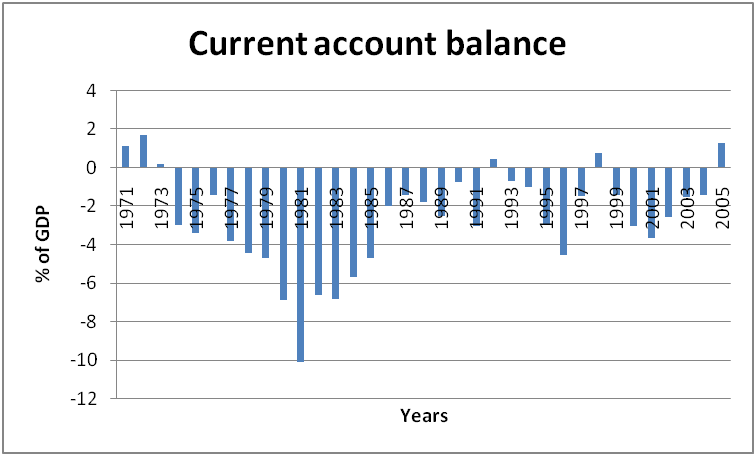
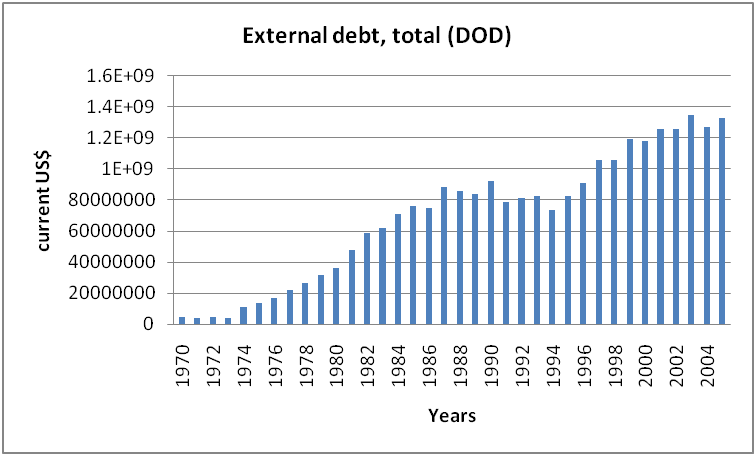
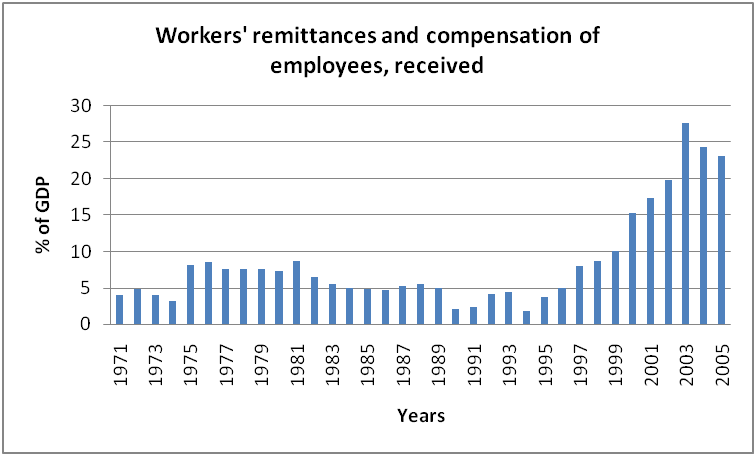
Appendix C
